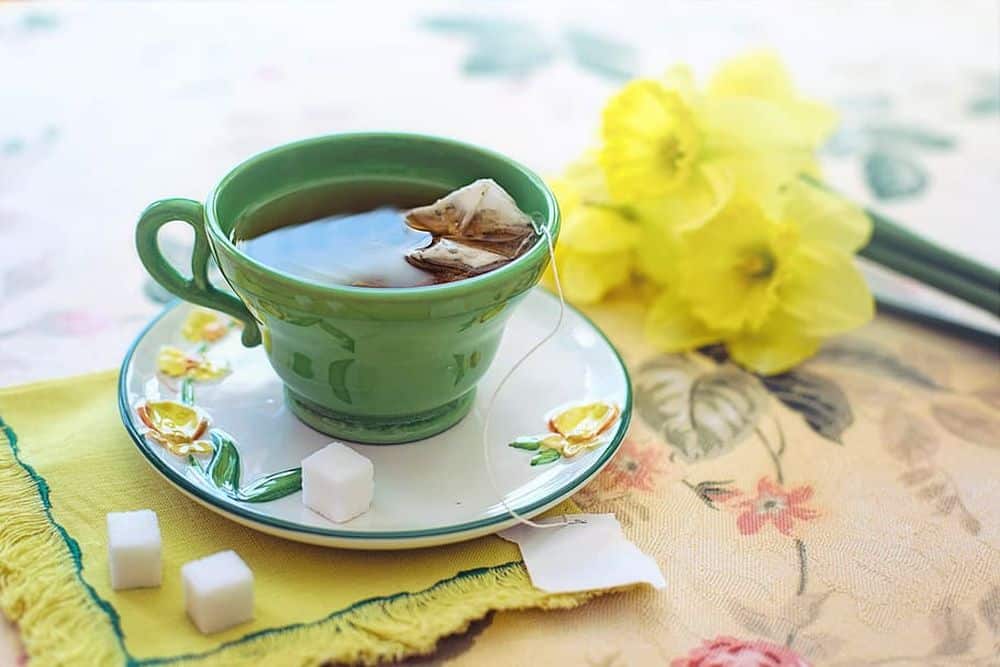
[Image above] The catechins in tea provide important health benefits, so the possibility that certain ceramic glazes may cause them to degrade is a question worth investigating. Credit: Pxfuel
The decorative aspect of ceramic glazes is the first property I think of when viewing a tiled wall or shelf full of pottery. But the scientist in me knows that glazes can provide additional functionalities beyond just decoration.
For example, glazing an earthenware mug or pot renders it impermeable to water, so the vessel can store liquids without leaking. Glazes can also provide ceramic tiles with advanced antibacterial properties, which is desirable for areas with high-touch surfaces, such as public restrooms.
The latter example raises an interesting question. Ceramics traditionally are viewed as inert materials that do not readily react with external stimuli. The fact that ceramic glazes can react with and destroy pathogens demonstrates these materials are not always as inert as common knowledge would have it. In that case, how might ceramic glazes affect other materials that come into contact with them—including food for consumption?
That question was the premise for a new open-access paper by researchers at Nagoya Institute of Technology in Japan. They investigated whether certain ceramic glazes used in tea pots and cups could potentially degrade the catechins found in tea.
Catechins are compounds with potent antioxidant properties, which means they can help reduce the risk of cardiovascular disease and certain cancers. This health benefit is one reason why tea remains such a popular drink globally.
If ceramic glazes are degrading the catechins, then the drink is losing one of its main benefits.
To test this possibility, the researchers first deposited four kinds of typical Japanese commercial glaze powders onto ceramic tiles and then sintered the samples. As seen in the table below, the main metal species in each glaze as determined by X-ray fluorescence were copper (Oribe), cobalt and titanium (Namako), iron (Irabo), and titanium (Toumei). The color appearance of each sample supported these results, with green, blue, orange, and transparent coloring corresponding to copper, cobalt, iron, and titanium, respectively.
After confirming the composition of each glaze, the researchers pulverized the sintered samples’ surfaces and mixed the re-powdered glazes with a commercial Japanese green tea. They processed the glaze/tea solution for 6 hours in a shaking bath and then removed the glaze powder by high-speed centrifugation and filtration.


Degradation of catechins in the tea was determined using high-performance liquid chromatography. Standard samples of epicatechin (EC), epicatechin gallate (ECg), epigallocatechin (EGC), epigallocatechin gallate (EGCg), gallocatechin (GC), and gallocatechin gallate (GCg) were used to confirm the catechin types that appeared in the chromatography spectra.
The researchers found that degradation depended on the chemical structure of glazes. The Oribe, Namako, and Irabo glazes, which contained copper, cobalt, and iron, respectively, reduced the amounts of all catechins significantly. In contrast, the Tomei glaze, which contained titanium, did not appear to significantly degrade any of the catechins except EGCg.
While the researchers state these results provide “important information on design and development of functional ceramic materials,” it is important to note the results were obtained in a manner far different than general tea drinking practice.
Most people will finish their cup of tea in well under an hour, and they will not be constantly and vigorously shaking it. While this experiment showed degradation is possible in extreme circumstances, a future study is needed to determine to what extent degradation occurs in a more realistic tea-drinking environment.
The open-access paper, published in Scientific Reports, is “Glazes induced degradation of tea catechins” (DOI: 10.1038/s41598-023-37480-8).
